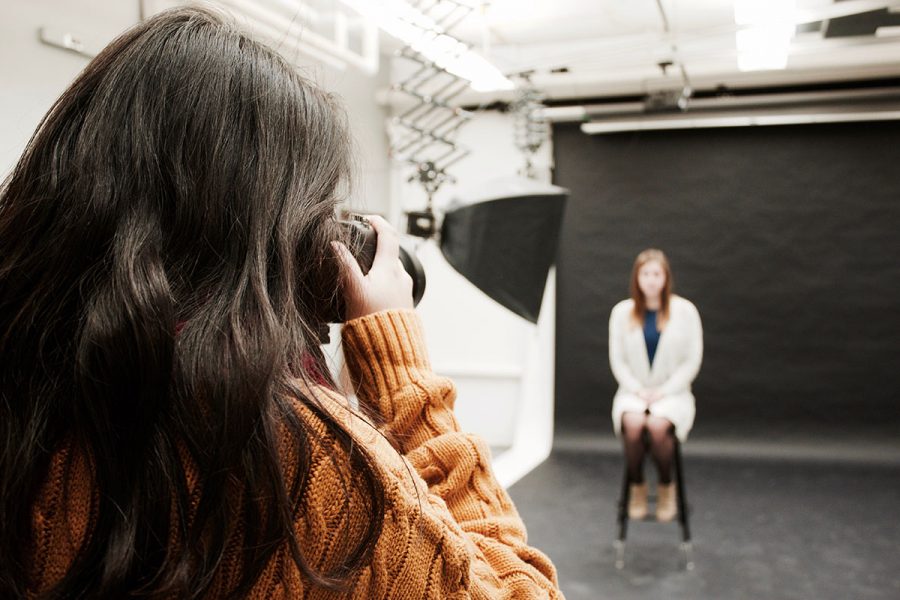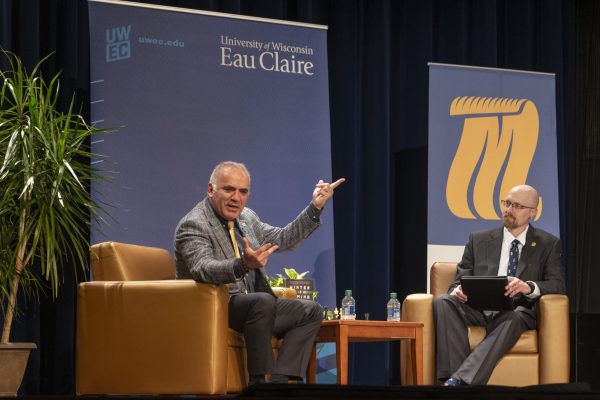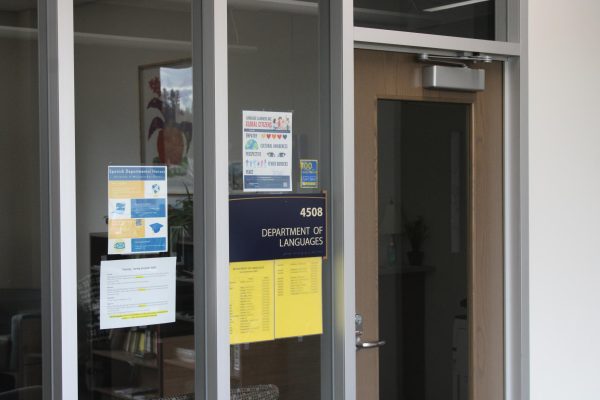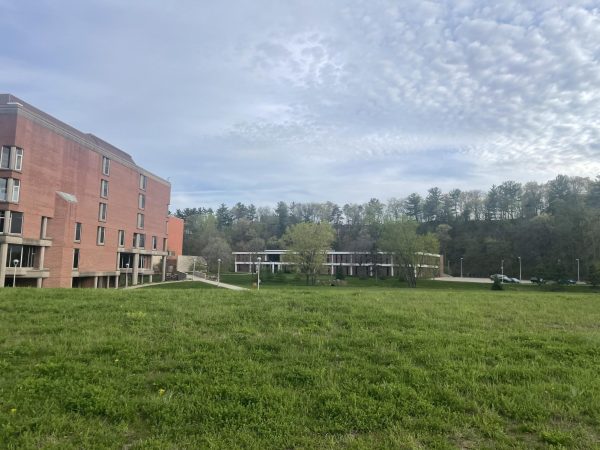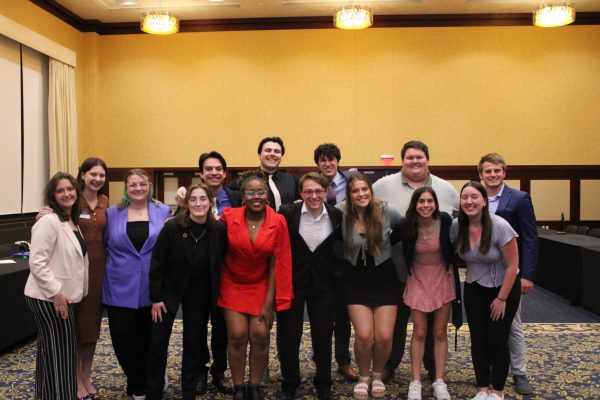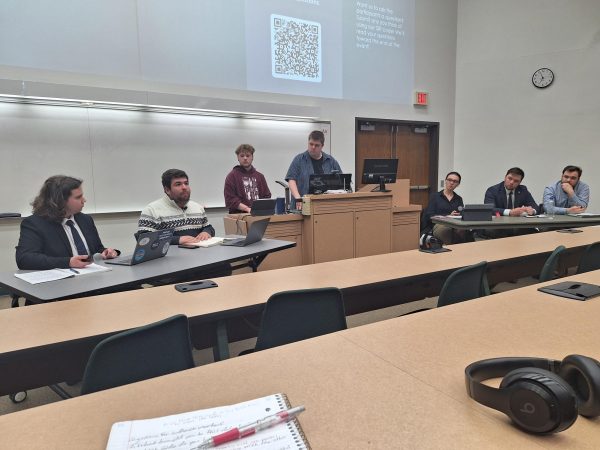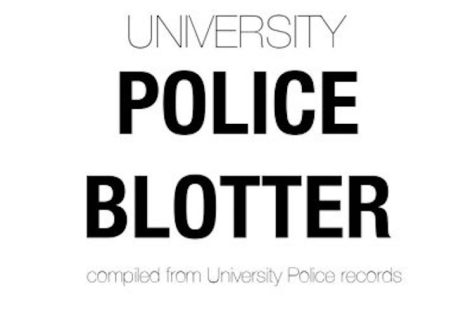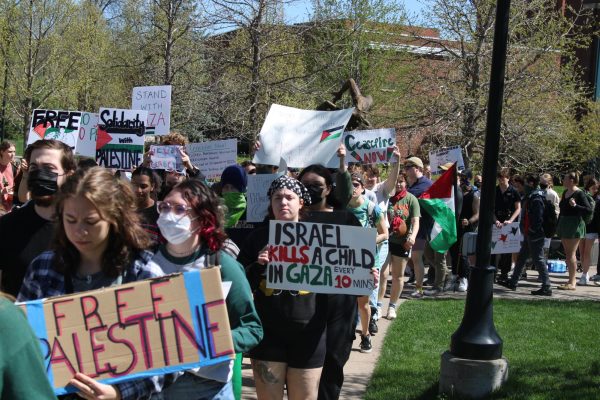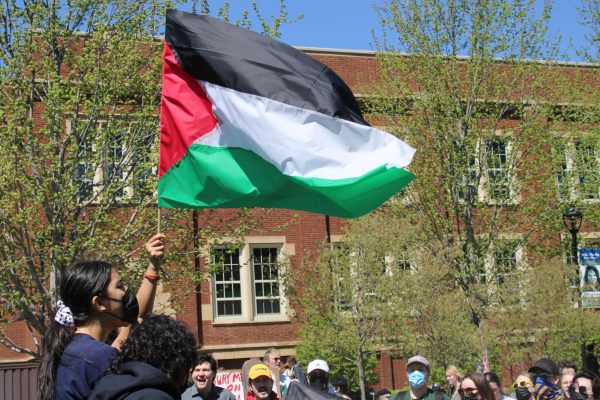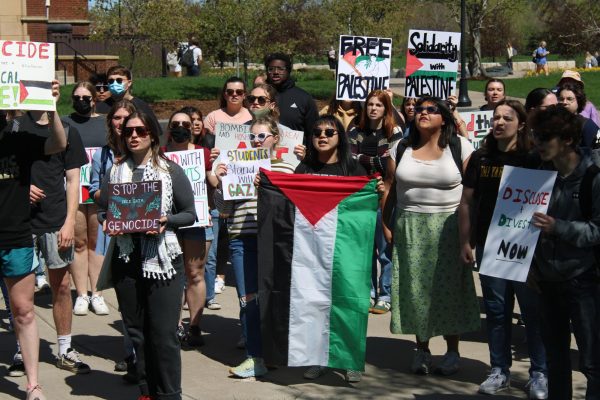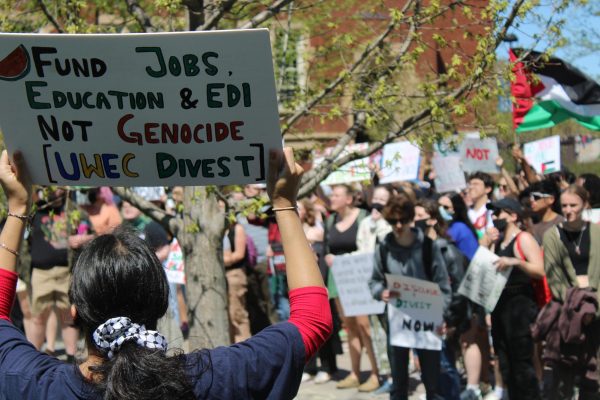Standing with the Silence Breakers
UW-Eau Claire makes efforts to engage in nationwide dialogue surrounding sexual assault
More stories from Nicole Bellford
Photo by Nicole Bellford
The #MeToo photo campaign, taking place in poster format at Fire Ball, is modeled after Time Magazine’s “The Silence Breakers.”
“Me too.”
Although a seemingly simple phrase, when put together, these two words have been used to create a national movement regarding sexual assault. From being the No. 1 trending hashtag on Twitter for consecutive weeks in late 2017, to exploiting the prevalence of sexual abuse in both athletics and the workplace, this phrase has served as a conversation starter about the culture of sexual assault in America.
The UW-Eau Claire campus community is no exception to the movement.
When the university’s annual Fire Ball comes to campus Feb. 23-24, the Gender and Sexuality Resource Center (GSRC) will be presenting a #MeToo photo campaign, allowing sexual assault survivors in the community to share their stories in poster format.
In addition, a new campus organization dedicated to supporting survivors, informing the community on the impact of sexual violence and helping to find solutions to the problem debuted this semester, known as Student Advocates for Sexual Assault Survivors (SASAS).
The Making of the Movement
Tarana Burke, a 44-year-old civil rights activist is credited for being the official founder of the #MeToo movement in 2006. According to the New York Times, however, Burke first felt inspired to create the movement in 1997 when a 13-year-old girl shared her story of sexual abuse, leaving Burke at a loss for words.
“I didn’t have a response or a way to help her in that moment, and I couldn’t even say ‘me too,’” Burke said in an interview with the New York Times. “It really bothered me, and it sat in my spirit for a long time.”
After ten years, Burke decided to create the nonprofit organization known as Just Be Inc., aimed at helping victims of sexual assault and providing them with resources to heal. Burke officially gave the movement the title of “Me Too,” encouraging others to speak up and share their story.
“For too long, survivors of sexual assault and harassment have been in the shadows,” Burke said in a press release on her nonprofit website. “We have been afraid to speak up, to say ‘Me Too’ and seek accountability. For many, the consequences of doing so have been devastating.”
In 2017, Burke’s movement made headlines as actress Alyssa Milano posted a tweet that started a nationwide social media trend. In the midst of sexual assault allegations against Hollywood producer, Harvey Weinstein, Milano posted a screenshot and accompanying text, urging survivors to step forward and showcase the prevalence of sexual abuse across the nation.
“Me too,” Milano’s screenshot post said. “Suggested by a friend: ‘If all the women who have been sexually harassed or assaulted wrote ‘Me Too’ as a status, we might give people a sense of the magnitude of the problem.”
“If you’ve been sexually harassed or assaulted write ‘me too’ as a reply to this tweet,” Milano posted alongside the screenshot.
By the following morning, The Guardian reported that Milano’s tweet had nearly 60,000 replies, with #MeToo being the No. 1 hashtag on Twitter. Since Milano’s post, the hashtag has been used in 85 different countries on Twitter and has been posted over 100 million times on Facebook.
The movement’s popularity prompted Time Magazine’s Person of the Year 2017 Issue to be dedicated to “The Silence Breakers,” recognizing those who have stepped forward to share their stories and “broken the silence” on a national problem.
Creating the #MeToo photo campaign
Inspired by Time Magazine’s “The Silence Breakers” issue, Kallie Friede, a graduate assistant at UW-Eau Claire’s GSRC, is responsible for putting together a campus-wide #MeToo photo campaign.
Survivors were encouraged to share as much or as little as they want in a 150-200 word statement, either as anonymous or with their name signed at the bottom. Those who signed their name then took a portrait-style picture to be displayed alongside their stories in poster format at the annual Fire Ball event.
Friede said she was assaulted in her first year of college, and had trouble sharing her story to others. However, Friede said she is hopeful that the photo campaign will help others who have suffered similar experiences to her own to find closure and support.
“For a long time, I would never have wanted to be a part of something like this (the photo campaign),” Friede said. “But I would have wanted to see it. And now, with the conversation happening nationally, I wanted to give people the opportunity to be a part of something like this on their own terms.”
Friede said she feels the process of sharing experiences and stories about sexual abuse can bring others together and promote a sense of recovery.
“I think it can be really cathartic and healing to have a space and a platform to share those experiences, but also making sure that happens in a way that feels comfortable for people who chose to participate,” Friede said.
The decision to showcase the photo campaign posters at the Fireball event specifically stems from the concept of the LGBTQIA+ community having an increased likelihood of suffering from sexual abuse, Friede said.
“LGBTQ people have disproportionate rates of sexual assault and interpersonal violence, so I think having that outlet as a centerpiece at Fire Ball is important,” Friede said. “When you have that many people in a space, there is power in that. We can create that sense of community.”
In terms of the #MeToo movement as a whole, Friede said she is happy to see the nation participating in a conversation about sexual abuse that has been long overdue.
“I think it’s really cool to be alive and to watch this reckoning happen,” Friede said. “It makes us ask what we can do to break down those barriers for people, so that we don’t live in a culture where harassment is pervasive and normalized in so many ways.”
The photo campaign posters will be available for viewing solely at the Fire Ball event and will not be posted online, Friede said, to respect the privacy of survivors.
SASAS on campus
After several semesters of planning and coordination, SASAS has just begun its first semester as an official university organization, thanks to the efforts of co-founders Grace James and Taylor Limberg, both juniors at Eau Claire.
James, a criminal justice student and president of the organization, said the duo was inspired to create SASAS after being underwhelmed by the university’s limited existing resources for sexual assault survivors. James said although resources such as the Center for Awareness of Sexual Assault (CASA) were helpful, she felt as though the university could benefit from more. James said the pair then created a Facebook group, sharing their up-and-coming organization’s goals.
Currently, the SASAS Facebook group has 28 members, defining the organization as a student advocacy group “committed to helping survivors of assault and educating all on the impact of sexual violence and how we can all be apart of the solution.”
James said she experienced sexual assault on multiple accounts in high school from someone she was in a relationship with. She said it was difficult at the time to realize it was assault, but after attending a performance about consent during her first year at college, she was able to to comprehend what had happened.
“It felt way too familiar,” James said. “It was like my life was being played out on stage.”
Looking at the #MeToo movement, James said she enjoys the concept of being open about experiencing sexual abuse.
“I think the purpose is the transparency,” James said. “It’s the fact that somebody that you know has gone through this. When we think of victims and survivors, we think of people who are detached from us, whereas ‘Me Too’ makes the point of saying ‘this is your family, your friends, your sisters.’”
SASAS meets every other Thursday from 7-8 p.m. in the Davies Center.
Looking at the impact
Jessica Short, a junior microbiology student, is among those being featured in the #MeToo photo campaign, as well as a new member of the SASAS organization.
Short said she was assaulted as a first-year college student two years ago when attending a university in Texas, nearly 2,000 miles from home. Short said prior to the incident, she thought the person who sexually abused her was her friend.
When the opportunity arose to participate in the #MeToo photo campaign, Short said she was a mix of excitement and nerves.
“I was extremely nervous,” Short said. “This was something I had kept very private up until now. Even some of my closest friends didn’t know the whole story. It was a humbling experience to be surrounded by others with similar stories.”
Despite nerves, Short said she is hopeful the campaign will help the campus community engage in a crucial dialogue surrounding sexual assault.
“I think the movement is a long time coming,” Short said.
Aside from involvement in the photo campaign, Short said her decision to join SASAS centers around activism.
“I wanted to do everything in my power to help others like me and to educate survivors,” Short said. “I also hope to raise awareness and develop prevention campaigns on our campus as well as our community to make it safer for everyone.”
Overall, Short said she is proud to attend a university that is willing to engage in the movement.
“That is part of the reason I think this project will be so powerful,” Short said. “It’s UW-Eau Claire students coming forward and saying ‘Me Too,’ along with so many other people across the nation. It allows for a more focused effort in our community.”
Editor’s Note: A previous version of this article stated that James considered CASA an “underwhelming resource.” This is incorrect, and has since been updated.

